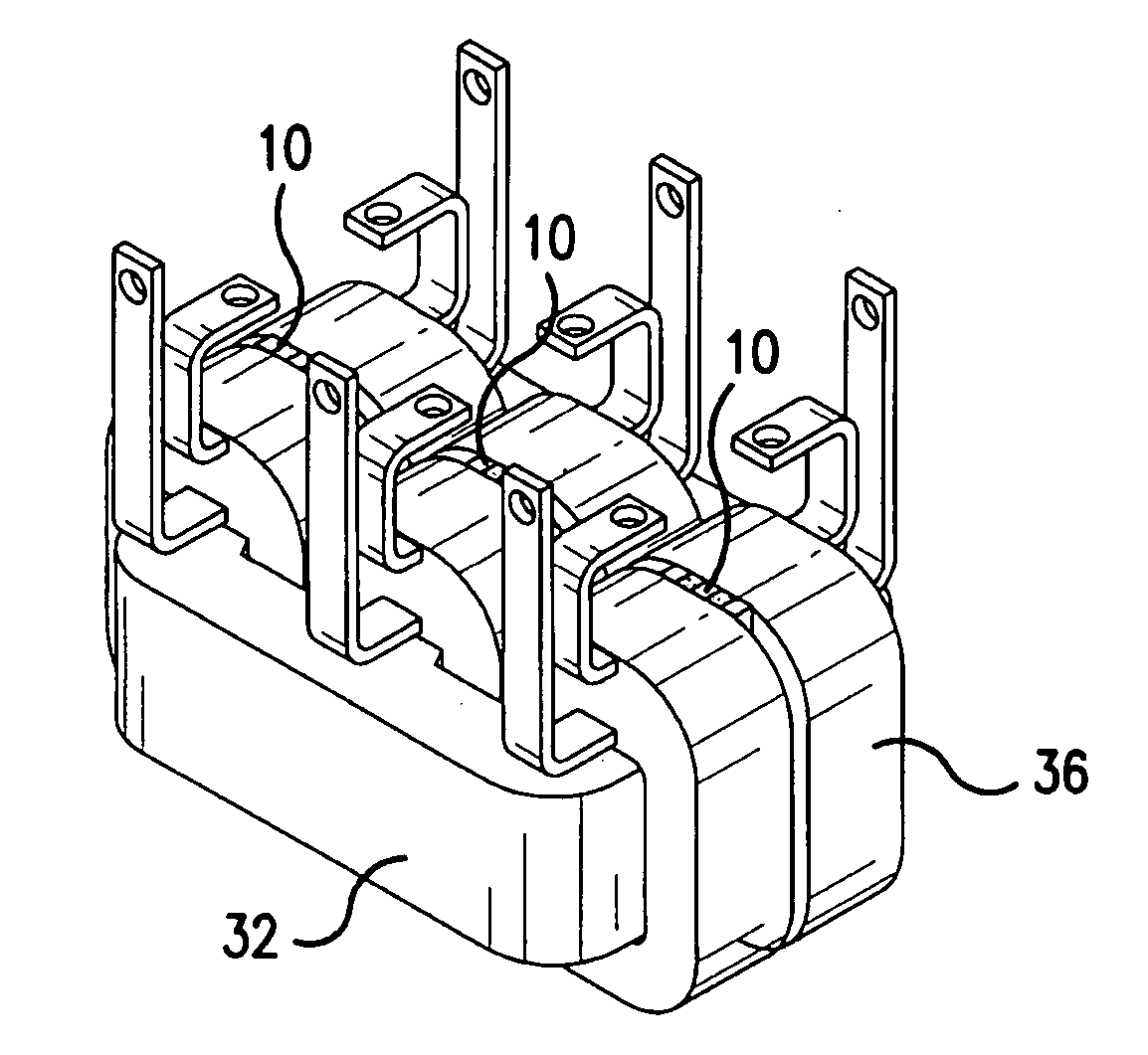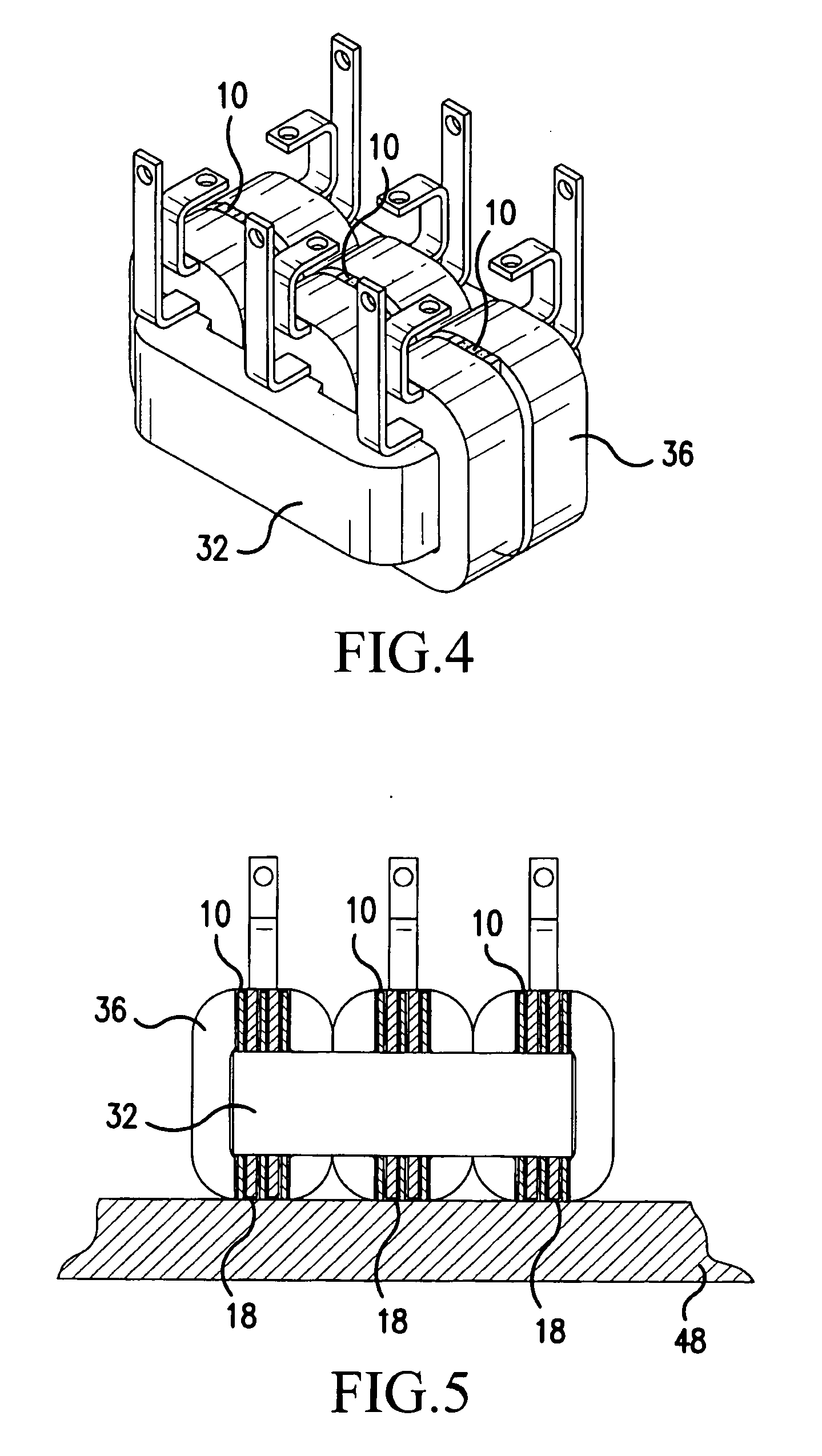Thermally conductive element for cooling an air gap inductor, air gap inductor including same and method of cooling an air gap inductor
a technology of thermally conductive elements and air gaps, applied in basic electric elements, lighting and heating apparatus, electrical equipment, etc., can solve the problems of increased gap loss, increased gap loss, and increased heating
- Summary
- Abstract
- Description
- Claims
- Application Information
AI Technical Summary
Problems solved by technology
Method used
Image
Examples
Embodiment Construction
[0024] Referring now to the drawings, wherein the showings are for the purpose of illustrating preferred embodiments of the present invention only, and not for the purpose of limiting same, FIG. 1 illustrates a heat transfer device 10 having a first side 12, a second side 14, a top 16 and a bottom 18. The distance from first side 12 to second side 14 may be referred to herein as the depth of heat transfer device 10; the distance from top 16 to bottom 18 may be referred to as the height of the heat transfer device 10.
[0025] Heat transfer device 10 is formed from a sheet of material repeatedly folded back on itself to form a series of folds 20 (or molded or cast in such a form) each fold 20 comprising a pair of primary walls 22 extending from first side 12 to second side 14 and from top 16 to bottom 18 of device 10 and a single connecting wall 24 connecting adjacent ones of primary walls 22. Device 10 is formed so that, looking in the direction from first side 12 to second side 14, i...
PUM
| Property | Measurement | Unit |
|---|---|---|
| thickness | aaaaa | aaaaa |
| operating temperature | aaaaa | aaaaa |
| angle | aaaaa | aaaaa |
Abstract
Description
Claims
Application Information
 Login to View More
Login to View More - R&D
- Intellectual Property
- Life Sciences
- Materials
- Tech Scout
- Unparalleled Data Quality
- Higher Quality Content
- 60% Fewer Hallucinations
Browse by: Latest US Patents, China's latest patents, Technical Efficacy Thesaurus, Application Domain, Technology Topic, Popular Technical Reports.
© 2025 PatSnap. All rights reserved.Legal|Privacy policy|Modern Slavery Act Transparency Statement|Sitemap|About US| Contact US: help@patsnap.com



